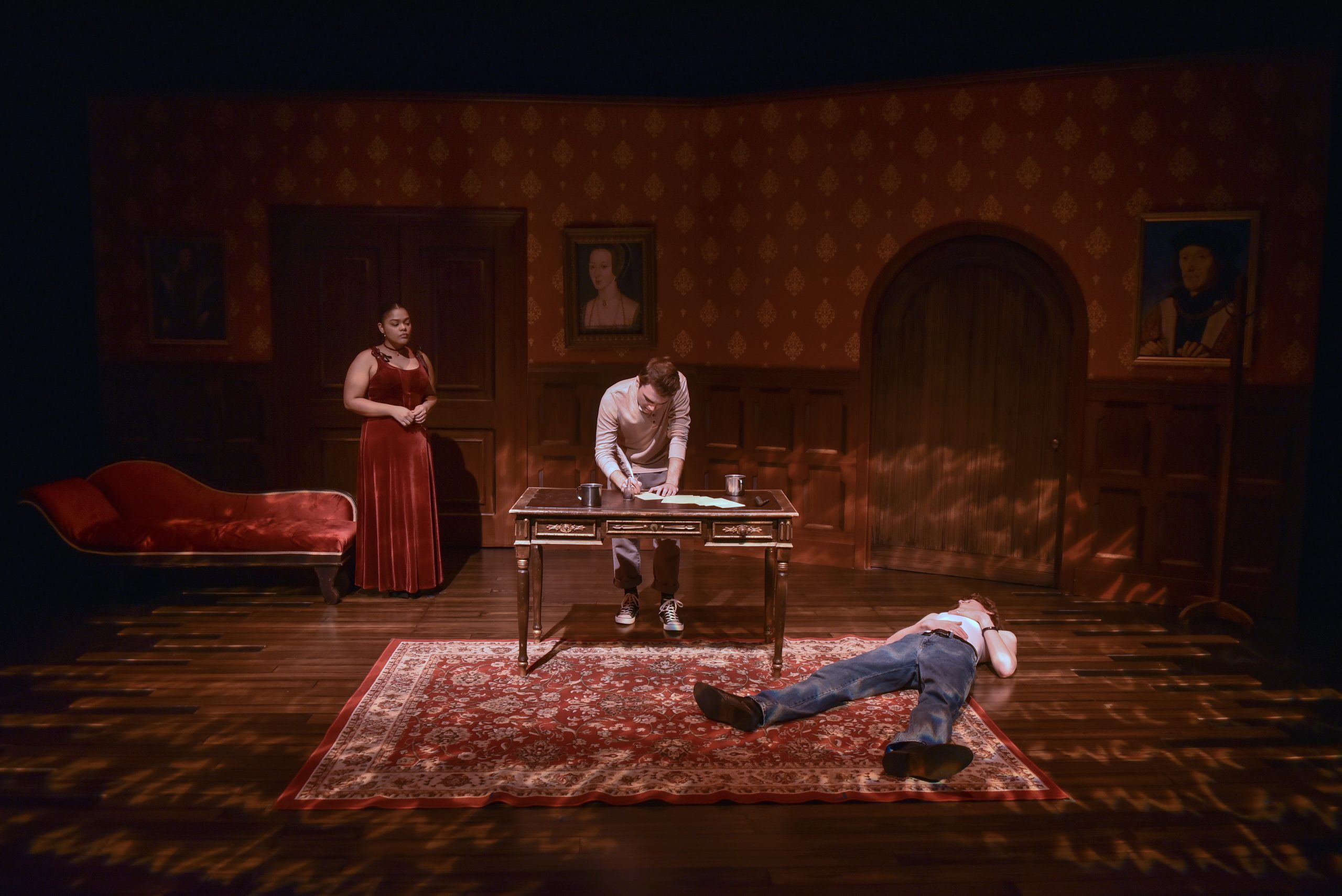Dramaturg’s Note | MARY, SWEET MARY
by Dramaturg, Lara Brinkman
Mary, Sweet Mary explores the power dynamics between royal and commoner in Elizabethan England. The play follows Queen Elizabeth I and explores her anxieties over her legacy, her duty to her people, and her intrusive thoughts taking the form of Mary, Queen of Scots, and Christopher Marlowe, a young playwright recently in trouble with the law.
Elizabeth I, daughter to King Henry VIII and Anne Boelyn, was born in 1533, narrowly avoiding execution at birth due to a failed rebellion against the English throne. When she ascended to the throne in 1558, she established a golden age for art and expression, supporting the careers of writers who are now household names, such as William Shakespeare.
Mary, Queen of Scots was a cousin of Elizabeth I, but despite the two’s lifelong feuding, they never actually met. Mary believed she held claim to the English throne, and unsuccessfully attempted to overthrow Elizabeth.
At the age of 25, Mary was imprisoned by Elizabeth, and was held for 19 long years, being transferred from prison to prison. At 44, after being abandoned by her country and her son, Mary was sentenced to death by Elizabeth.
“It is said that after her execution, when the executioner raised the head for the crowd to see, it fell and he was left holding only Mary’s wig.”
Christopher Marlowe, famous playwright of the Elizabethan Era, and Thomas Kyd, a lesser-known playwright, shared lodging together in the 1590s. The relationship between the two was one of romance and passion, and thought to be homosexuality. In 1593, a pamphlet was found in Thomas’ possession, denying the deity of Jesus Christ and calling for the blood of the Queen. He immediately blamed possession of the pamphlet on Marlowe, who was soon after arrested and taken to the Tower of London. As a sign of respect for the work he had done earlier for the Crown, (including spywork and intelligence operations against Catholic plots) Marlowe was released two days later, with a trial set to assess his crimes in the coming weeks. While free, Marlowe went to a bar with friends where, during a heated argument as to who was to pay the bill, Marlowe was stabbed in the eye, resulting in his death.
Francis Walsingham, a devout Protestant, served under Elizabeth I as Ambassador to France, Member of Parliament, and eventually, Personal Spymaster to the Queen. He ran intelligence operations, most of which were aimed at keeping the Spanish attempts to usurp the throne at bay. He and Marlowe were distantly related, most likely cousins. Because of this, he would consistently work with Marlowe and hire him for missions. He died of testicular cancer at 58. The news was delivered to King Philip II of Spain via letter. The letter read:
“Secretary Walsingham has just expired, at which there is much sorrow.”
Upon receiving the letter, the king, who held a particular disdain for Francis, added in the margin, “There, yes! But it is good news here.”
The only character in this show not based upon a real person is Agnes, chambermaid to Elizabeth I. Writing a play based on historical events can be quite restricting. But through Agnes, Mary, Sweet Mary is able to take creative liberties as to the relationship between her and Elizabeth, and the effects of that relationship on the rest of the characters.
Mary, Sweet Mary acts as a lens into our past and focuses on queer expression that, despite historical attempts at its repression, endures for centuries. It helps us reflect on the people and artists that came before us, and how our contemporary times have not changed the human experience as much as we might think.
I hope you enjoy the show!


